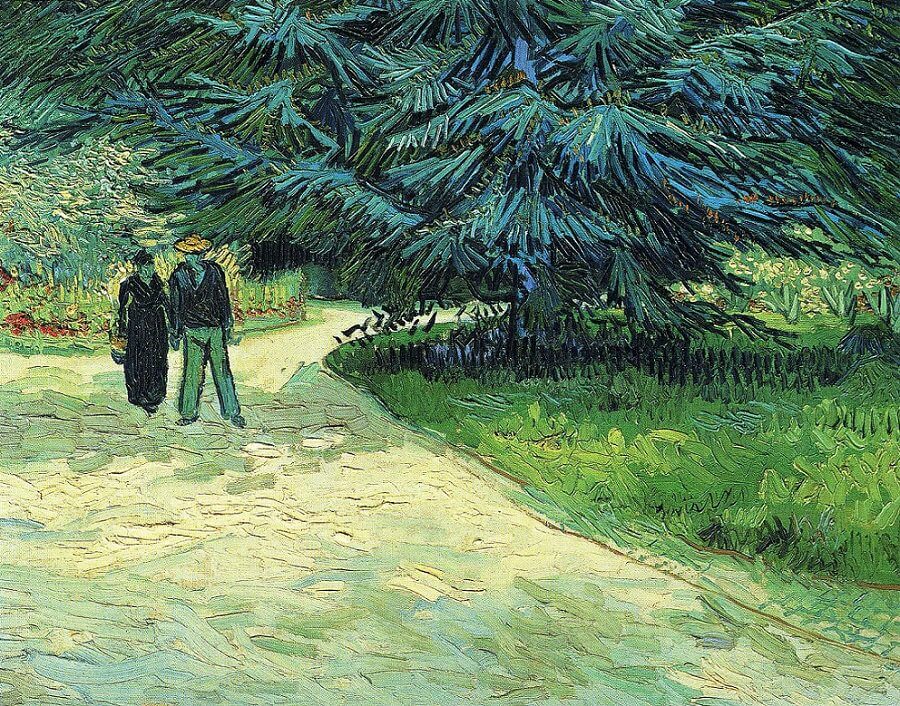Public Garden at Arles, 1889 by Vincent Van Gogh

In one of several paintings of the public park, a site dear to the holiday mood of the Impressionists, the true theme is the magnificent blue pine, which van Gogh admired. It becomes idyllic through the two lovers in blue who emerge hand in hand in its shadow; they dwell in the strength of the venerable prolific tree, which shades and protects them.
The image is startling in the diagonal division of the canvvas: one half all richly colored vegetation, the other mainly sandy walk. This bold partitioning, unstable and strange to the eye, but true to van Gogh's love of sharp perspectives - here applied to a narrow, even intimate, space - is stabilized, quietly reconciled with the normal banding of ground and background, by the lights and shadows of the path, and by the spread of the gigantic pine across the entire canvas; it is planted on a deep horizontal shadow, which continues, in a grayed tone, across the lighter path. The two figures on the shadow, the only verticals in the canvas, help to fix the place of the tree in the middle distance. And yet the tree's outline at the left prolongs the diagonal of the path - a purposive continuity of a line in depth with a line in surface, practiced in Renaissance art and renewed in recent painting.
The harmony of tones is especially delightful. Into the ruling bluish tonality van Gogh has worked a richness of greens and blues and their whitened tints, with a few dispersed touches of warm color as minor contrasting accents. This blue and green world contains within itself a wide range from light to dark, warm to cool, intense to neutral. In the sandy tones of the path is another order of contrasts, from the smoothness of the warmer, distant lighted part to the vehemently brushed shadows of the foreground, related in their grayed hues to the saturated tones of the vegetation.
Above all, the picture owes its vitality to the fervor of the brushwork which, in the luxuriant tree, is a marvel of graphic characterization through rapidly drawn colored lines. In their diagonals and convergences, these pick up the larger diagonals of the work and the thrust of unaccented angular elements in the surroundings - the lights on the path, the angle of its bend, the man's legs.




















